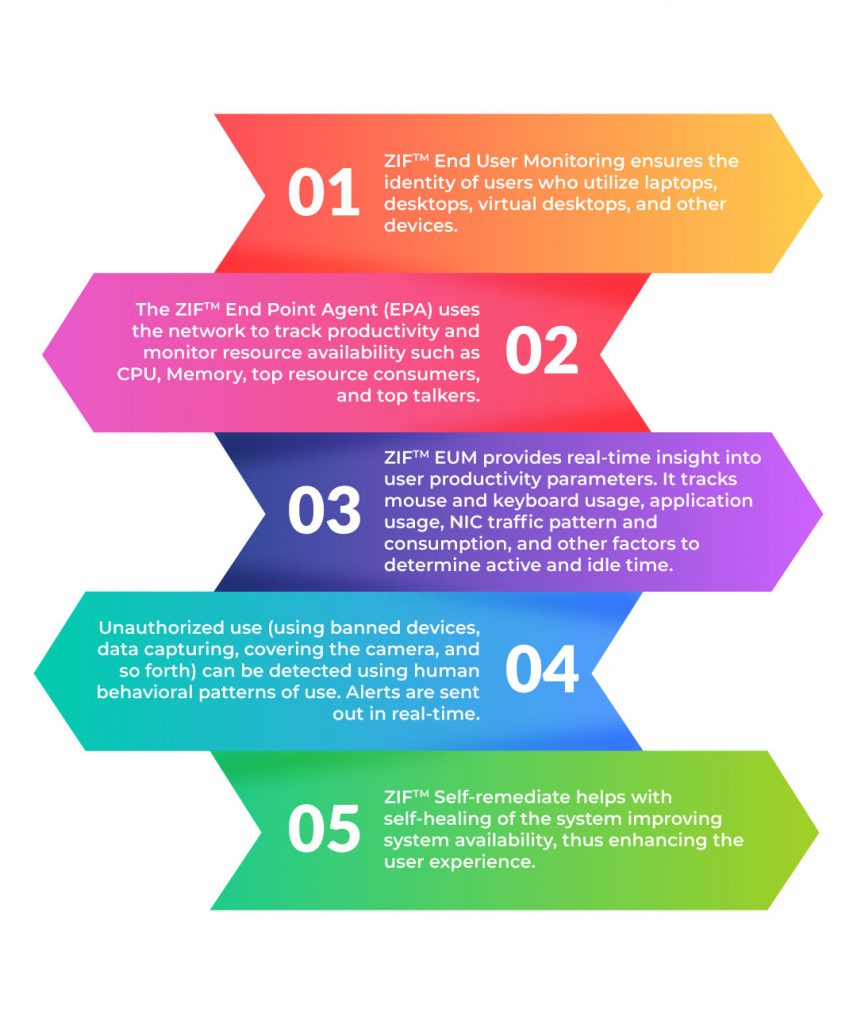
Easing into Hybrid Work with ZIFTM


As per a Pew Research Centre report released in 2020, 71% Americans were working from home at the time of the survey and 54% said they would want to continue working from home after the coronavirus outbreak ends. However, a 2020 study by The Martec Group found that “job satisfaction, motivation, and mental health declined significantly for remote workers across multiple industries, demographics, and seniority levels during the pandemic.” It was also found that creativity and collaboration suffered due to remote working during the pandemic.
The discussion around the future of work has a lot of people supporting hybrid work. At least that’s what the survey results say. A McKinsey research found that 52% of the employees surveyed would prefer a more flexible working model post-pandemic. A Salesforce survey reported that 64% of workers want to spend at least some time at a workplace instead of working entirely remotely.
Transitioning to a hybrid mode will require an overhaul of the existing policies and culture. One of the major challenges to be overcome are the technological issues, which require a robust IT infrastructure.
Home networks are now operating as an extension of the business network. They must be secure, and it is well understood that VPNs alone will not suffice. There is troubleshooting, configuration, ongoing upkeep and monitoring, and much more to consider. It can be enough to distress an IT team when multiplied by hundreds or thousands of remote employees.
But employees don’t have complete control over their system availability and security. They could be directly or indirectly using applications, services, servers, and other IT environment components. The application or service could be anything, including desktop applications, online or cloud-based SaaS apps, and PaaS/SaaS-based web services such as payment gateways and APIs, among other things. It could become overwhelming for the IT team to fulfil their job obligations successfully in the new distributed environment.
Most significantly, disruption in work may lead to interruption in services for the end-customers which can or rather definitely have negative impact on the business. Keeping the customers delighted is the single-most important goal of all businesses. Failing to do which, will impact the company’s goodwill and revenue.
Organizations can ensure the smooth functioning of systems for their remote workforce through proactive remote monitoring and remediation of issues. This is where the Zero Incident FrameworkTM (ZIFTM) comes into the picture.
With its advanced AI and ML algorithms, ZIFTM helps to monitor the system performance of an enterprise and predict any issues before they strike. ZIFTM also helps with self-remediating the impending issues.
ZIF Monitor is a component of ZIFTM. Its key objective is to improve user experience through real-time and proactive monitoring of the IT environment. In real-time, it monitors all the layers involved in the user experience. Applications, databases, servers, APIs, endpoints, and network devices are just a few of the layers that are monitored.

Agents assist with end-user monitoring, capturing various health parameters about the environment and the system. They have intelligence built into them. When the target environment is already short on resources, the agent does not load it; instead, it collects health-related indicators and conveys them efficiently and effectively through the telemetry channel. The intelligence is used to determine which parameters should be gathered, how long they should be collected for, and other factors.

ZIF Automation module not only reduces the resolution time but also helps in leveraging your system to self-heal. ZIFTM has perfected the art of foreseeing device, application, and service failures. It can also foresee a performance deterioration. ZIFTM‘s auto-remediation bots can handle foreseeable faults, ensuring that customers get the performance they expect. This one-of-a-kind offering from ZIFTM gives IT engineers an edge on the service reliability of the IT assets they handle.
Overall, ZIFTM empowers your team by enabling their systems to be reliable and available. ZIFTM troubleshoots employee connectivity issues, checks work device performance, monitors network with real-time threat insights, and more. With ZIFTM, a smooth transition to hybrid and remote workplaces is possible. The only thing employees should worry about their tasks and not about the availability of the service/system/application. ZIFTM makes it possible for an organization to have seamless productivity irrespective of the employees’ work locations.
Find out how ZIFTM can help your organization here: https://zif.ai/

Rabiya is part of the ZIF Product Marketing team. She has worked as a Software Engineer for four years. She is curious about the latest trends in Technology and the latest AI products in the market. Outside of work, she enjoys gymming and is interested in Nutritional Science and Wellness. She also likes cooking, sketching, and painting.
Please complete the form details and a customer success representative will reach out to you shortly to schedule the demo. Thanks for your interest in ZIF!